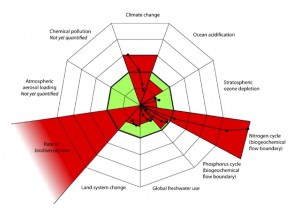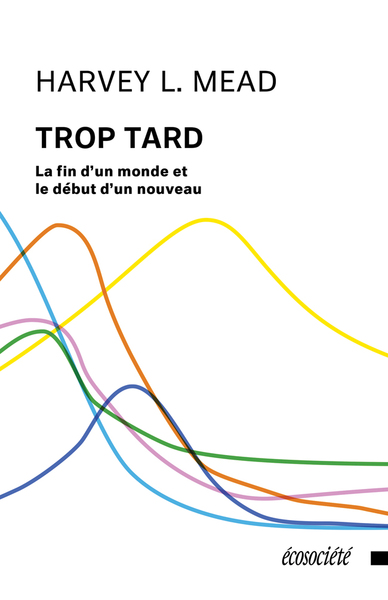
Réflexions sur les enjeux du développement
- Biographie »
- Conférences »
- Activité minière et l’avenir 8ii13
- Association humaniste du Québec
- Bioproduits ou Economic Conditions, Political Decisions, Environmental Losses – pour NRCan, juillet 2009
- Calculation of Quebec’s GPI à Beijing
- Conseil de bassin de la rivière du Cap-Rouge, 26 mars 2015
- Conseil régional de l’environnement de Montréal, le 13 janvier 2016
- CSN janvier 2012
- Défaillances de systèmes
- Dérives énergétiques et métalliques (GRIP-UQAM le 4 mai 2013)
- Développement durable, trop tard – Analyse stratégique, sans mandat (BAPE, le 8 avril 2013)
- Développement durable: trop tard
- Échec d’une carrière, échec d’une société – Université de Sherbrooke 28 janvier 2014
- Économie verte ou effondrement? CERIUM le 25 juin 2015
- ÉNAP-CREXE à ACFAS Évaluation de programmes 8 mai 2012
- Festival de la décroissance conviviale du 1er juin 2019
- GIRAM le 24 mars 2019 – Le troisième lien
- HEC Pour la suite du monde 18-19v09
- IPV Outil pour l’indignation UQAR/CREBSL 24 février 2012
- IRDA International Congress Biosystems Engineering 16 juin 2010
- L’effondrement: fin d’un monde. construire un nouveau? – Fin de semaine du 7-8 septembre 2019
- L’IPV présenté au CASS à Beijing 28×11
- La sortie du pétrole – plus que l’on pense: il n’y aura pas de transition
- Le monde dans lequel nous vivrons: scénario du pire – Juges de la Cour du Québec le 25 mai 2006
- Le Québec face à une transition
- Les dérapages du Plan Nord à l’AMEUS 2 mars 2012
- Oeillères cognitives dans l’administration publique – Observatoire de l’administration publique de l’ÉNAP le 27 septembre 2013
- Ordre des ingénieurs forestiers le 20 mars 2013
- Présentation au Centre des arts actuels Skol le 3 novembre 2018
- ROEÉ: Regroupement des organismes environnementaux en énergie – le 22 octobre 2013
- Simplicité involontaire le 27 octobre 2018
- Sortir du pétrole
- Trop tard pour éviter l’effondrement? UL 11 février 2013
- Écrits »
- Appel aux groupes concernant l’économie verte (août 2012)
- Brundtland: Sa vision était claire
- Conférence des juristes et Loi sur le développement durable (2009)
- Démographie, en Chine et au Québec
- Développement minier dans la deuxième moitié de l’ère des métaux
- Échec du mouvement environnemental
- Échec du mouvement social
- Économie biophysique: pour sortir du désastre
- En finir avec l’illusion de la croissance novembre 2011
- Humanisme et l’environnement: la grande conversation
- L’administration publique: Œillères cognitives et risques d’illusion dans la pratique, dans la recherche et dans la vérification
- L’automobile, électrique ou pas: fausse bonne idée? fuite en avant? passage obligé?
- L’OCDE fonce dans la croissance verte pour Rio+20, et l’IRÉC le suit
- La Banque mondiale et le développement
- Les crises et le développement (mars 2009)
- Les indignés sans projets? – des pistes pour le Québec
- Life Report
- Limites à la croissance
- Mouches »
- Philosophe écologiste errant
- Remplacer quelle génération?
- Trop tard, pace David Suzuki
- Université de Sherbrooke – économie de l’environnement 970
- Galerie nature »
- Galerie rurale »
- Galerie urbaine »
- Général »
- Indice de progrès véritable (IPV) »
- #1607 (pas de titre)
- A consensus that the GDP is not a good indicator of our progress?
- Franc-Nord Franc-Vert
- Genuine Progress Indicator USA (2006)
- IPV Chapitre 2: Foresterie
- IPV Introduction
- IPV Synthèse
- L’IPV dans l’évaluation de programme (ÉNAP-CREXE mai 2012)
- La recherche, la pratique et la vérification: un rôle pour l’IPV (OAP/ÉNAP septembre 2013)
- Livre sur l’IPV: Compte-rendu et couverture
- Some methodological issues concerning the GPI for Quebec 2013
- Trop tard : Suivi et couverture médiatique »
- Blogue
- Biographie »
- Conférences »
- Activité minière et l’avenir 8ii13
- Association humaniste du Québec
- Bioproduits ou Economic Conditions, Political Decisions, Environmental Losses – pour NRCan, juillet 2009
- Calculation of Quebec’s GPI à Beijing
- Conseil de bassin de la rivière du Cap-Rouge, 26 mars 2015
- Conseil régional de l’environnement de Montréal, le 13 janvier 2016
- CSN janvier 2012
- Défaillances de systèmes
- Dérives énergétiques et métalliques (GRIP-UQAM le 4 mai 2013)
- Développement durable, trop tard – Analyse stratégique, sans mandat (BAPE, le 8 avril 2013)
- Développement durable: trop tard
- Échec d’une carrière, échec d’une société – Université de Sherbrooke 28 janvier 2014
- Économie verte ou effondrement? CERIUM le 25 juin 2015
- ÉNAP-CREXE à ACFAS Évaluation de programmes 8 mai 2012
- Festival de la décroissance conviviale du 1er juin 2019
- GIRAM le 24 mars 2019 – Le troisième lien
- HEC Pour la suite du monde 18-19v09
- IPV Outil pour l’indignation UQAR/CREBSL 24 février 2012
- IRDA International Congress Biosystems Engineering 16 juin 2010
- L’effondrement: fin d’un monde. construire un nouveau? – Fin de semaine du 7-8 septembre 2019
- L’IPV présenté au CASS à Beijing 28×11
- La sortie du pétrole – plus que l’on pense: il n’y aura pas de transition
- Le monde dans lequel nous vivrons: scénario du pire – Juges de la Cour du Québec le 25 mai 2006
- Le Québec face à une transition
- Les dérapages du Plan Nord à l’AMEUS 2 mars 2012
- Oeillères cognitives dans l’administration publique – Observatoire de l’administration publique de l’ÉNAP le 27 septembre 2013
- Ordre des ingénieurs forestiers le 20 mars 2013
- Présentation au Centre des arts actuels Skol le 3 novembre 2018
- ROEÉ: Regroupement des organismes environnementaux en énergie – le 22 octobre 2013
- Simplicité involontaire le 27 octobre 2018
- Sortir du pétrole
- Trop tard pour éviter l’effondrement? UL 11 février 2013
- Écrits »
- Appel aux groupes concernant l’économie verte (août 2012)
- Brundtland: Sa vision était claire
- Conférence des juristes et Loi sur le développement durable (2009)
- Démographie, en Chine et au Québec
- Développement minier dans la deuxième moitié de l’ère des métaux
- Échec du mouvement environnemental
- Échec du mouvement social
- Économie biophysique: pour sortir du désastre
- En finir avec l’illusion de la croissance novembre 2011
- Humanisme et l’environnement: la grande conversation
- L’administration publique: Œillères cognitives et risques d’illusion dans la pratique, dans la recherche et dans la vérification
- L’automobile, électrique ou pas: fausse bonne idée? fuite en avant? passage obligé?
- L’OCDE fonce dans la croissance verte pour Rio+20, et l’IRÉC le suit
- La Banque mondiale et le développement
- Les crises et le développement (mars 2009)
- Les indignés sans projets? – des pistes pour le Québec
- Life Report
- Limites à la croissance
- Mouches »
- Philosophe écologiste errant
- Remplacer quelle génération?
- Trop tard, pace David Suzuki
- Université de Sherbrooke – économie de l’environnement 970
- Galerie nature »
- Galerie rurale »
- Galerie urbaine »
- Général »
- Indice de progrès véritable (IPV) »
- #1607 (pas de titre)
- A consensus that the GDP is not a good indicator of our progress?
- Franc-Nord Franc-Vert
- Genuine Progress Indicator USA (2006)
- IPV Chapitre 2: Foresterie
- IPV Introduction
- IPV Synthèse
- L’IPV dans l’évaluation de programme (ÉNAP-CREXE mai 2012)
- La recherche, la pratique et la vérification: un rôle pour l’IPV (OAP/ÉNAP septembre 2013)
- Livre sur l’IPV: Compte-rendu et couverture
- Some methodological issues concerning the GPI for Quebec 2013
- Trop tard : Suivi et couverture médiatique »
- Blogue


